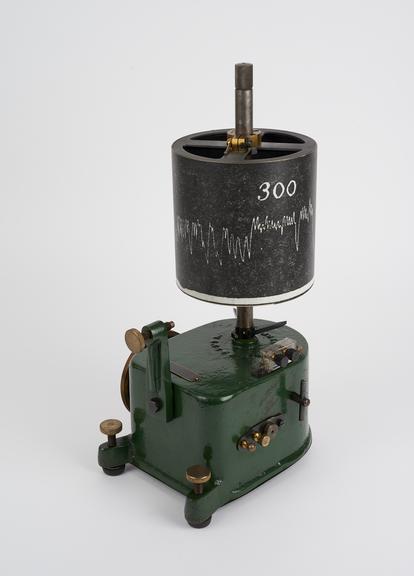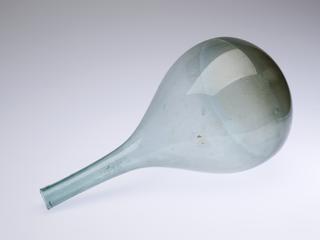Sherrington Starling kymograph, including main unit with recording drum and separate speed control unit, by C. F. Palmer ( London) Ltd., 63A Effra Road, London, SW2, England, c. 1955.
The kymograph is a classic laboratory research tool. It was invented by German physiologist Carl Ludwig (1816-1895) in 1847. One of its earliest uses was measuring blood pressure during physiological experiments. This Sherrington Starling recording drum was used with a kymograph and it visually recorded body activity such as heart beat and other muscle activity. As the blood pulsated, a pen attached to the kymograph recorded the movement on smoked paper wrapped around the metal drum. This let physiologists see a permanent record of blood pressure.
Pioneers in the field of neurophysiology, Sir Charles Scott Sherrington (1857-1952) and Ernest Henry Starling (1866-1927) developed the drum. It was manufactured by C. F. Palmer (London) Limited and advertised at the price of ten pounds and ten shillings in the company’s 1932 catalogue. Laboratories still use the Sherrington Starling recording drum today.











